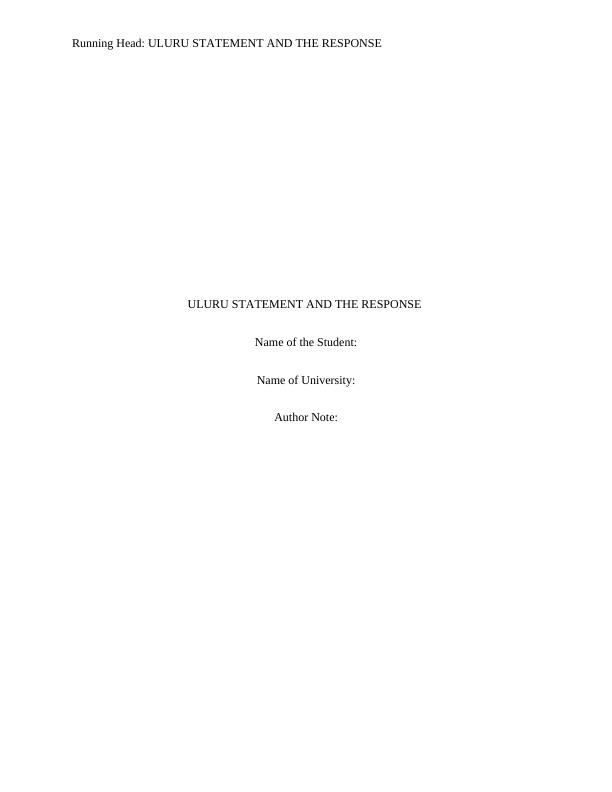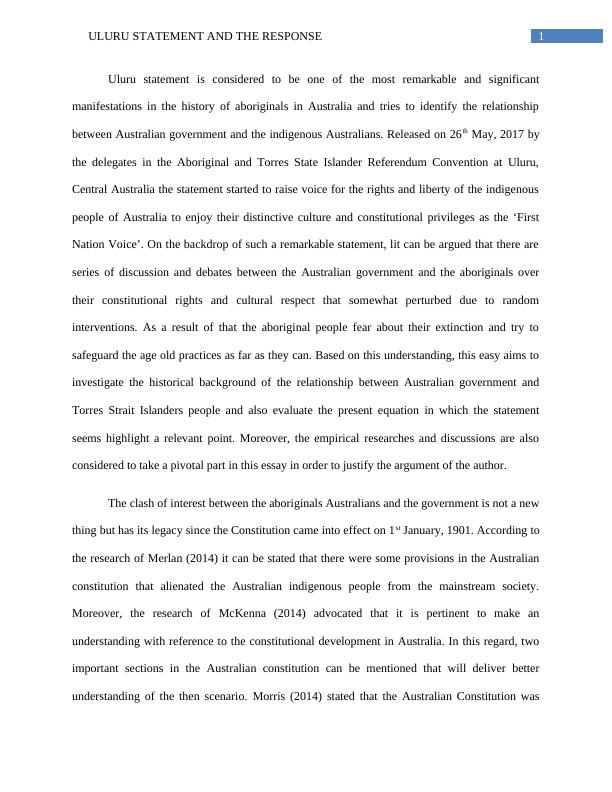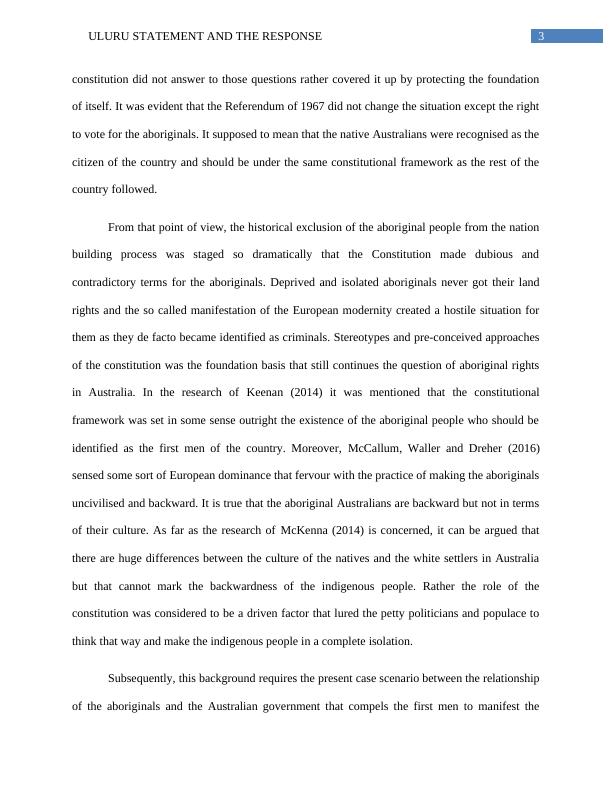Uluru Statement and the Response
Write a research essay answering one of the questions related to Australian engagement with the US and China.
11 Pages2891 Words462 Views
Added on 2023-04-21
About This Document
This essay explores the historical background and present relationship between the Australian government and the indigenous Australians, focusing on the significance of the Uluru Statement. It discusses the constitutional limitations, discrimination, and the need for the government to take necessary action for the rights of the aboriginal Australians.
Uluru Statement and the Response
Write a research essay answering one of the questions related to Australian engagement with the US and China.
Added on 2023-04-21
ShareRelated Documents
End of preview
Want to access all the pages? Upload your documents or become a member.
First Nation People: Uluru Statement, Constitutional Implications, and Indigenous Sovereignty
|8
|2175
|315
LLB203 - Australian Constitutional Law - Assignment
|10
|2905
|97
Repealing Section 51(xxvi) of Australian Constitution: A Step towards Eliminating Racial Discrimination against Indigenous People
|9
|2466
|242
Assignment on Indigenous Australians
|7
|1588
|62
ABOR6004 The Aboriginal and Torres Island Community
|8
|2079
|49
Economics: Cultural Marginalisation of Communities Assignment 2022
|6
|1719
|23




